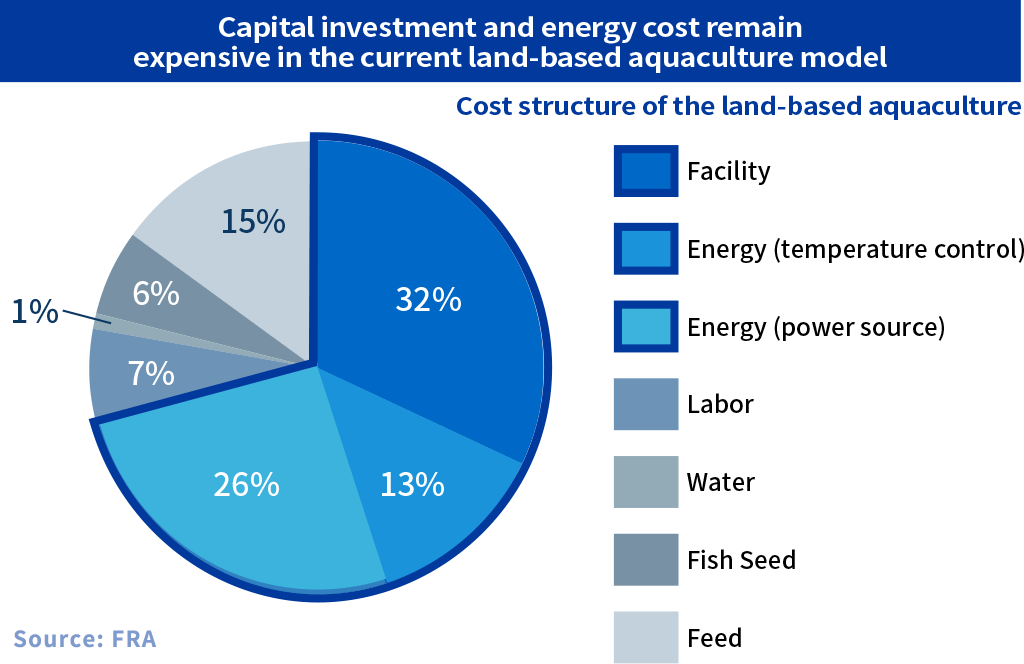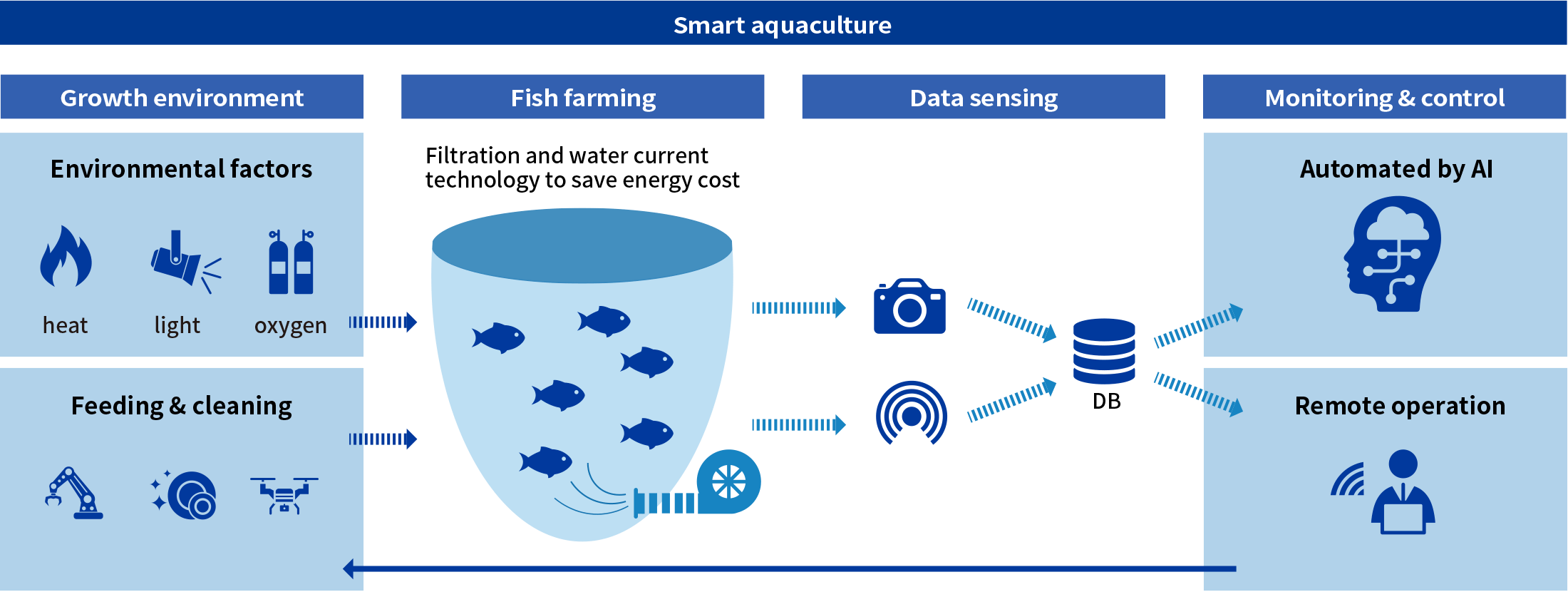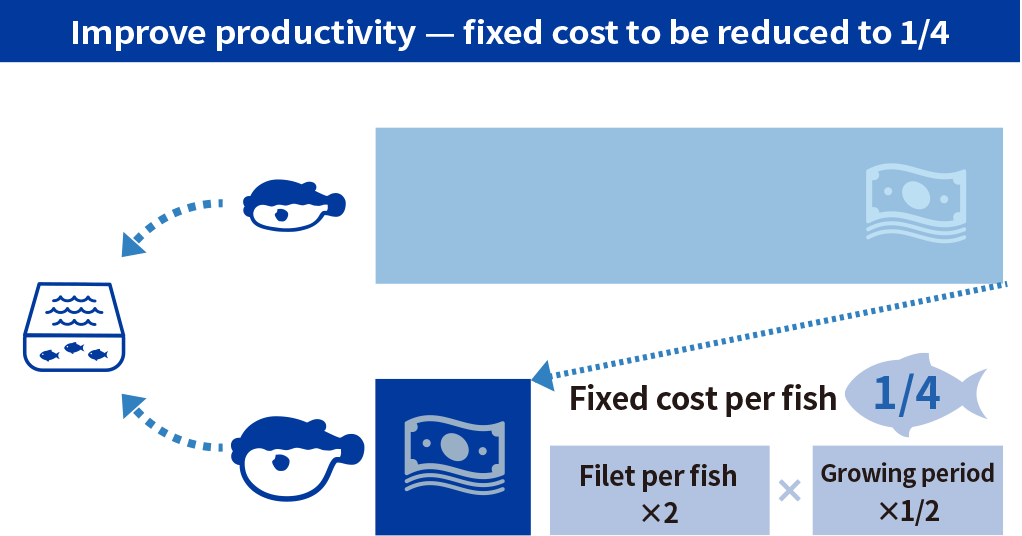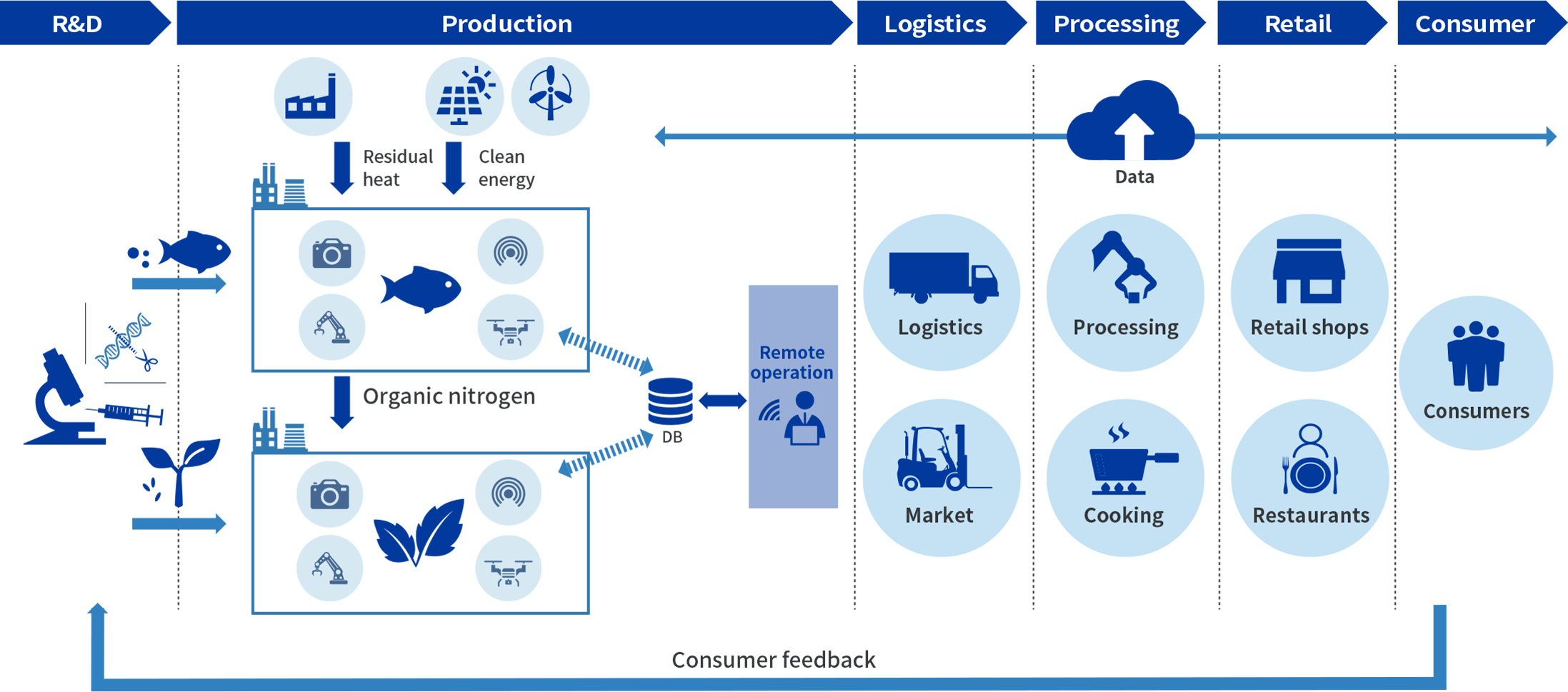Cost benefit is the biggest challenge for land-based aquaculture to prevail.
Land-based aquaculture is said to be a promising method for fish farming as it can be more productive, environmentally friendly, and easier to maintain transparency. However, it is yet to be common due to heavy capital investment and expensive energy cost.


Taking aquaculture to the next stage using cutting edge technologies.
In order to maximize the productivity of the aquaculture facility, AI/IoT system are installed. The system is designed to monitor the fish and control its growth environment either by automation or by remote operation. Also, filtration and water current technology are utilized to save energy cost. These efforts are driven by open innovation.

Higher productivity with the combination of genome editing × AI/IoT.
By combining the new fish variety (fast-growth & increased-filet) and the smart aquaculture facility, the productivity per area is expected to be approximately 4 times higher than that of the normal setting. By making constant improvement based on feedback from actual operation, we can transform land-based aquaculture into productive business model.

Our ultimate goal is to establish a new aquaculture ecosystem that is good for environment, and good for people.
In the long run, we’re planning to establish an aquaculture ecosystem that is good for environment; energy to be supplied from either clean energy or residual heat from factories, and wastages to be recycled as fertilizers by extracting organic nitrogen.
Also, we’re planning to make it better for people as well. By linking market information with the R&D, we can promote breed improvement based on consumer needs.
